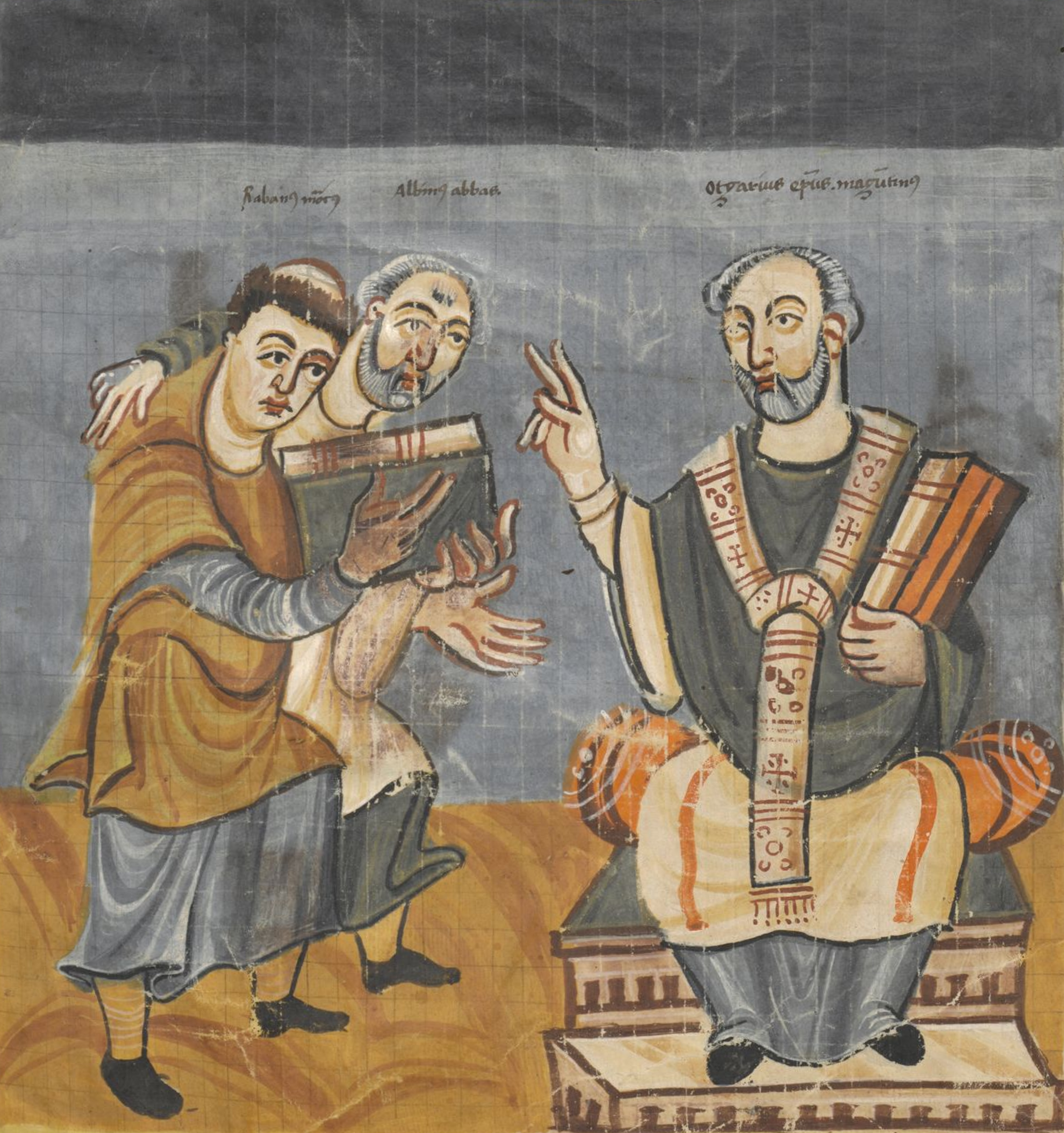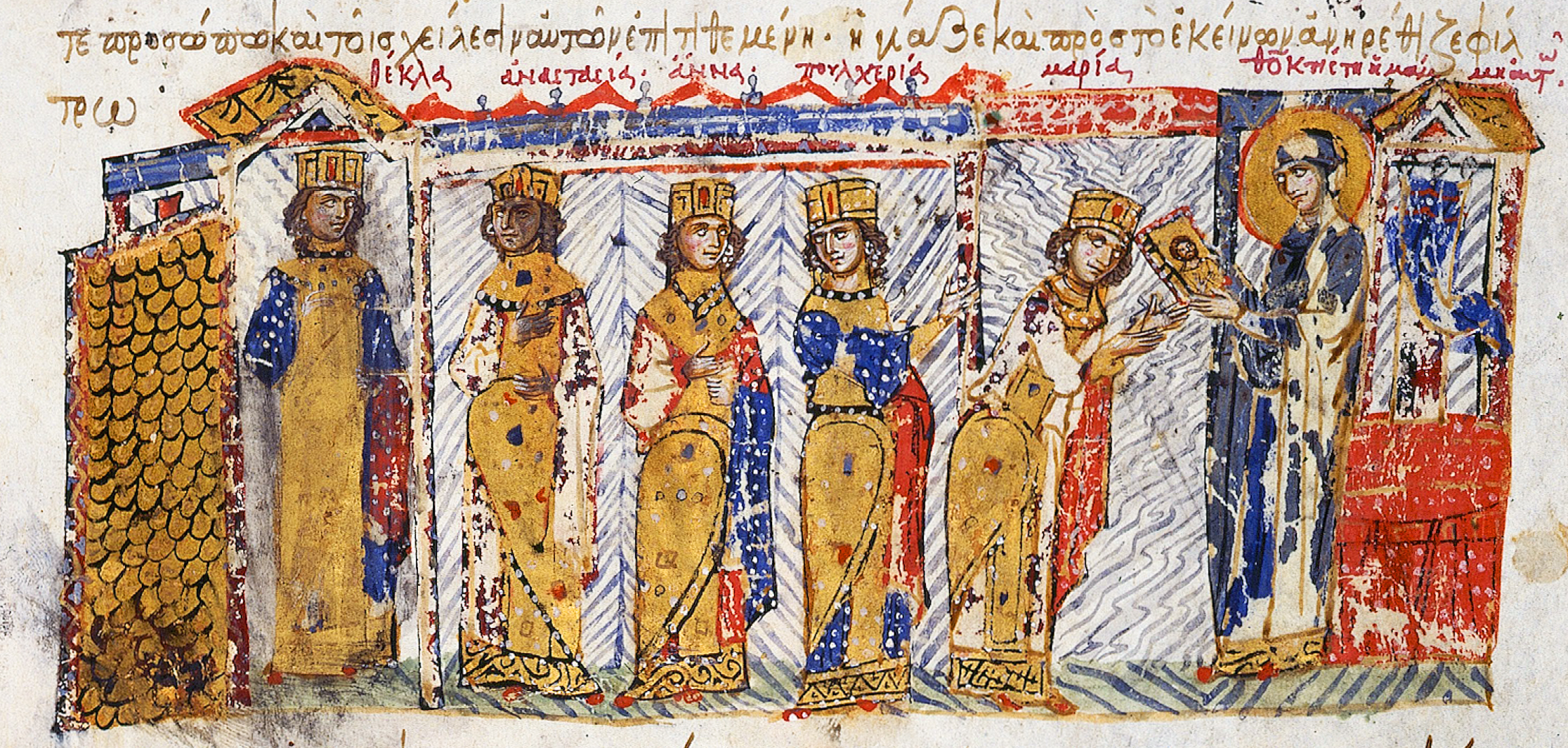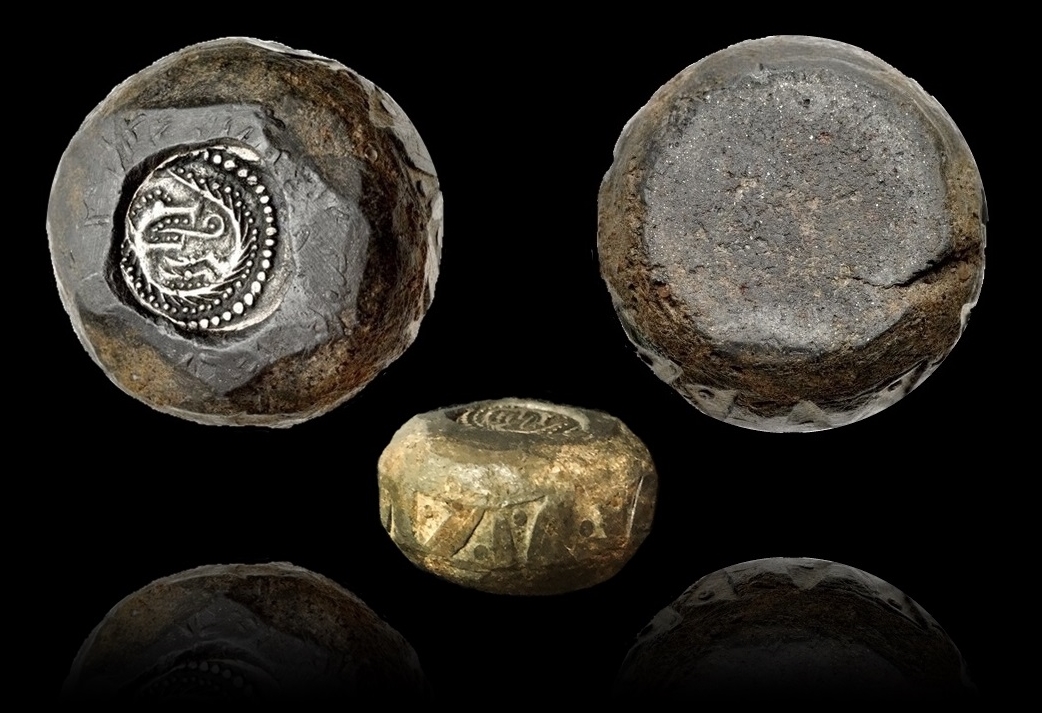|
856
__NOTOC__ Year 856 ( DCCCLVI) was a leap year starting on Wednesday of the Julian calendar. Events By place Byzantine Empire * March 15 – Emperor Michael III overthrows the regency of his mother Theodora. He appoints his uncle Bardas as the ''de facto'' regent and co-ruler of the Byzantine Empire.. Europe * King Charles the Bald cedes the county of Maine to Erispoe, ruler (duke) of Brittany—this in return for an alliance against the Vikings. * King Ordoño I of Asturias is said to have begun the repopulation of the town of León in the northwest of Spain (approximate date). Britain * October 1 – King Æthelwulf of Wessex marries the 12- or 13-year-old Judith, daughter of Charles the Bald, at Verberie (Northern France). She is crowned queen and anointed by Hincmar, archbishop of Reims. The marriage is a diplomatic alliance between Wessex and the West Frankish Kingdom.Paul Hill (2009). ''The Viking Wars of Alfred the Great'', p. 18. . * Winter &n ... [...More Info...] [...Related Items...] OR: [Wikipedia] [Google] [Baidu] |
Judith Of Flanders
Judith of Flanders (c. 843 – 870 or later) was a Carolingian princess who became Queen of Wessex by two successive marriages and later Countess of Flanders. Judith was the eldest child of the Carolingian emperor Charles the Bald and his first wife, Ermentrude of Orléans. In 856, she married Æthelwulf, King of Wessex. After her husband's death in 858, Judith married his son and successor, Æthelbald. King Ætheldbald died in 860. Both of Judith's first two marriages were childless. Her third marriage was to Baldwin I, Margrave of Flanders, with whom she had several children. Ancestry and early life Judith was born around 843 or in early 844 as the eldest child of Charles the Bald, king of West Francia, and his first wife Ermentrude of Orléans (823–869) and was named after her paternal grandmother, Judith of Bavaria. She was a great-granddaughter of Charlemagne. Queen of Wessex First marriage and coronation In 855, the widower Æthelwulf, King of Wessex (died 858 ... [...More Info...] [...Related Items...] OR: [Wikipedia] [Google] [Baidu] |
Theodora (wife Of Theophilos)
Theodora ( Greek: Θεοδώρα; 815 – c. 867), sometimes called Theodora the Armenian or Theodora the Blessed, was Byzantine empress as the wife of Byzantine emperor Theophilos from 830 to 842 and regent for the couple's young son Michael III, after the death of Theophilos, from 842 to 856. Theodora is most famous for bringing an end to the second Byzantine Iconoclasm (814–843), an act for which she is recognized as a saint in the Eastern Orthodox Church. Though her rule saw the loss of most of Sicily and failure to retake Crete, Theodora's foreign policy was otherwise highly successful; by 856, the Byzantine Empire had gained the upper hand over both the Bulgarian Empire and the Abbasid Caliphate, and the Slavic tribes in the Peloponnese had been forced to pay tribute, all without decreasing the imperial gold reserve. Possibly of Armenian descent, Theodora was born into a rural family of traders and military officials in Paphlagonia. In 830 she was selected by Euph ... [...More Info...] [...Related Items...] OR: [Wikipedia] [Google] [Baidu] |
Marriage
Marriage, also called matrimony or wedlock, is a culturally and often legally recognised union between people called spouses. It establishes rights and obligations between them, as well as between them and their children (if any), and between them and their Affinity (law), in-laws. It is nearly a cultural universal, but the definition of marriage varies between cultures and religions, and over time. Typically, it is an institution in which interpersonal relationships, usually sexual, are acknowledged or sanctioned. In some cultures, marriage is recommended or considered to be Premarital sex, compulsory before pursuing sexual activity. A marriage ceremony is called a wedding, while a private marriage is sometimes called an elopement. Around the world, there has been a general trend towards ensuring Women's rights, equal rights for women and ending discrimination and harassment against couples who are Interethnic marriage, interethnic, Interracial marriage, interracial, In ... [...More Info...] [...Related Items...] OR: [Wikipedia] [Google] [Baidu] |
Michael III
Michael III (; 9/10 January 840 – 24 September 867), also known as Michael the Drunkard, was Byzantine emperor from 842 to 867. Michael III was the third and traditionally last member of the Amorian dynasty, Amorian (or Phrygian) dynasty. He was given the disparaging epithet ''the Drunkard'' () by the hostile historians of the succeeding Macedonian dynasty, but modern historical research has rehabilitated his reputation to some extent, demonstrating the vital role his reign played in the resurgence of Byzantine power in the 9th century. He was also the youngest person to bear the imperial title, as well as the youngest to succeed as senior emperor. Life Early life and regency Michael was the youngest child of the emperor Theophilos (emperor), Theophilos and his empress Theodora (wife of Theophilos), Theodora. His precise date of birth is uncertain, but the balance of available evidence supports a birthdate in early 840, probably on 9 or 10 January. He was coronation of the ... [...More Info...] [...Related Items...] OR: [Wikipedia] [Google] [Baidu] |
Erispoe
Erispoe (; ; died 2 or 12 November 857) was Duke of Brittany from 851 to his death. After the death of his father Nominoe, he led a successful military campaign against the Franks, culminating in his victory at the Battle of Jengland. He is subsequently referred to as "King of Brittany". Erispoe's recorded titles include ("prince of the province of Brittany"), ("duke of the Bretons"), and ("usurping king of the Bretons"). However, if Erispoe was usurping regality in Brittany at that time (857), it is not attested in other sources. It may imply continued Frankish resentment of the title. He is called ("king of the Bretons") by Regino of Prüm (d. 915). War with the Franks Erispoe was born to Nominoe's wife Argentaela, but the date of his birth is not known. He was involved in his father's campaigns to take control of the Frankish counties of Rennes and Nantes. In 843, in alliance with Lambert II of Nantes, Erispoe took command of the Breton army while his father was ill. Lambe ... [...More Info...] [...Related Items...] OR: [Wikipedia] [Google] [Baidu] |
Vikings
Vikings were seafaring people originally from Scandinavia (present-day Denmark, Norway, and Sweden), who from the late 8th to the late 11th centuries raided, pirated, traded, and settled throughout parts of Europe.Roesdahl, pp. 9–22. They also voyaged as far as the Mediterranean Sea, Mediterranean, North Africa, the Middle East, Greenland, and Vinland (present-day Newfoundland in Canada, North America). In their countries of origin, and some of the countries they raided and settled in, this period is popularly known as the Viking Age, and the term "Viking" also commonly includes the inhabitants of the Scandinavian homelands as a whole. The Vikings had a profound impact on the Early Middle Ages, early medieval history of Northern Europe, northern and Eastern Europe, including the political and social development of England (and the English language) and parts of France, and established the embryo of Russia in Kievan Rus'. Expert sailors and navigators of their cha ... [...More Info...] [...Related Items...] OR: [Wikipedia] [Google] [Baidu] |
March 15
Events Pre-1600 * 474 BC – Roman consul Aulus Manlius Vulso celebrates an ovation for concluding the war against Veii and securing a forty years truce. * 44 BC – The assassination of Julius Caesar, the dictator of the Roman Republic, by a group of senators takes place on the Ides of March. * 493 – Odoacer, the first barbarian King of Italy after the fall of the Western Roman Empire, is slain by Theoderic the Great, king of the Ostrogoths, while the two kings were feasting together. * 856 – Michael III, emperor of the Byzantine Empire, overthrows the regency of his mother, empress Theodora (wife of Theophilos) with support of the Byzantine nobility. * 897 – Al-Hadi ila'l-Haqq Yahya enters Sa'dah and founds the Zaydi Imamate of Yemen. * 933 – After a ten-year truce, German King Henry the Fowler defeats a Hungarian army at the Battle of Riade near the Unstrut river. * 1311 – Battle of Halmyros: The Catalan Company d ... [...More Info...] [...Related Items...] OR: [Wikipedia] [Google] [Baidu] |
Wessex
The Kingdom of the West Saxons, also known as the Kingdom of Wessex, was an Anglo-Saxon Heptarchy, kingdom in the south of Great Britain, from around 519 until Alfred the Great declared himself as King of the Anglo-Saxons in 886. The Anglo-Saxons believed that Wessex was founded by Cerdic and Cynric of the Gewisse, though this is considered by some to be a legend. The two main sources for the history of Wessex are the West Saxon Genealogical Regnal List and the ''Anglo-Saxon Chronicle'' (the latter of which drew on and adapted an early version of the List), which sometimes conflict. Wessex became a Christianity, Christian kingdom after Cenwalh () was baptised and was expanded under his rule. Cædwalla later conquered Kingdom of Sussex, Sussex, Kingdom of Kent, Kent and the Isle of Wight. His successor, Ine of Wessex, Ine (), issued one of the oldest surviving English law codes and established a second West Saxon bishopric. The throne subsequently passed to a series of kings wit ... [...More Info...] [...Related Items...] OR: [Wikipedia] [Google] [Baidu] |
France
France, officially the French Republic, is a country located primarily in Western Europe. Overseas France, Its overseas regions and territories include French Guiana in South America, Saint Pierre and Miquelon in the Atlantic Ocean#North Atlantic, North Atlantic, the French West Indies, and List of islands of France, many islands in Oceania and the Indian Ocean, giving it Exclusive economic zone of France, one of the largest discontiguous exclusive economic zones in the world. Metropolitan France shares borders with Belgium and Luxembourg to the north; Germany to the northeast; Switzerland to the east; Italy and Monaco to the southeast; Andorra and Spain to the south; and a maritime border with the United Kingdom to the northwest. Its metropolitan area extends from the Rhine to the Atlantic Ocean and from the Mediterranean Sea to the English Channel and the North Sea. Its Regions of France, eighteen integral regions—five of which are overseas—span a combined area of and hav ... [...More Info...] [...Related Items...] OR: [Wikipedia] [Google] [Baidu] |
Byzantine Empire
The Byzantine Empire, also known as the Eastern Roman Empire, was the continuation of the Roman Empire centred on Constantinople during late antiquity and the Middle Ages. Having survived History of the Roman Empire, the events that caused the fall of the Western Roman Empire in the 5th centuryAD, it endured until the fall of Constantinople to the Ottoman Empire in 1453. The term 'Byzantine Empire' was coined only after its demise; its citizens used the term 'Roman Empire' and called themselves 'Romans'. During the early centuries of the Roman Empire, the western provinces were Romanization (cultural), Latinised, but the eastern parts kept their Hellenistic culture. Constantine the Great, Constantine I () legalised Christianity and moved the capital to Constantinople. Theodosius I, Theodosius I () made Christianity the state religion and Greek gradually replaced Latin for official use. The empire adopted a defensive strategy and, throughout its remaining history, expe ... [...More Info...] [...Related Items...] OR: [Wikipedia] [Google] [Baidu] |
León, Spain
León (; ) is a city and Municipalities of Spain, municipality of Spain, capital of the province of León, part of the autonomous community of Castile and León, in the northwest of the Iberian Peninsula. It has a population of 124,303 (2019), by far the largest municipality in the province. The population of the metropolitan area, including the neighbouring San Andrés del Rabanedo and other smaller municipalities, accounts for around 200,000 inhabitants. Founded as the military encampment of the ''Legio VI Victrix'' around 29 BC, its standing as an encampment city was consolidated with the definitive settlement of the ''Legio VII Gemina'' from 74 AD. Following its partial depopulation due to the Umayyad invasion of Hispania, Umayyad conquest of the peninsula, 910 saw the beginning of one of its most prominent historical periods, when it became the capital of the Kingdom of León, which took active part in the Reconquista against the Moors, and came to be one of the fundamenta ... [...More Info...] [...Related Items...] OR: [Wikipedia] [Google] [Baidu] |
Verberie
Verberie () is a Communes of France, commune in the Oise Departments of France, department in northern France. It lies southwest of Compiègne on the main road to Senlis, Oise, Senlis and Paris. The railway station is on the line from Compiègne to Crépy-en-Valois. History Verberie was the site of an Iron Age Europe, Iron Age aristocratic Gauls, Gallic farm, during the La Tène culture, La Tène period. On 1 October 856 Judith of Flanders, Judith, the daughter of Charles the Bald, King of West Francia, married Æthelwulf, King of Wessex at the royal palace of Verberie. During the First World War it was the scene of fighting on 1 September 1914, and in 1918. The village has several war graves, war cemeteries including the Verberie French National Cemetery which contains the graves of 3,221 French soldiers (of whom 2,339 are unidentified), 52 servicemen from the United Kingdom, and one Canada, Canadian cavalryman. Population The inhabitants are known as ''Sautriauts'' in Fr ... [...More Info...] [...Related Items...] OR: [Wikipedia] [Google] [Baidu] |







